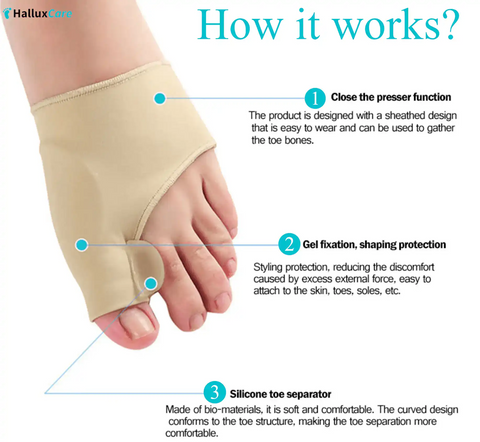Lapiplasty and Bone Fusion: Should You Worry About X-Rays or Symptoms?
Last Updated: March 2025
Reviewed by: Dr. Emily Carter, DPM – Board-Certified Podiatric Surgeon
Bunion surgery, particularly procedures like Lapiplasty® and Lapidus fusion, can be life-changing for those suffering from bunion pain and foot misalignment. However, post-surgical concerns often arise when X-rays don’t show complete bone fusion. Does this mean the surgery failed? Should you be worried?
A crucial principle in orthopedic recovery is "Treat patients, not X-rays." Let’s explore what this means, why it matters, and how it can guide your recovery journey.
---
Key Takeaways
- ✅ Bone fusion takes time – It can take up to a year or longer for complete healing.
- ✅ Symptoms matter more than X-rays – If you feel fine and can walk without pain, incomplete fusion may not be a problem.
- ✅ Red flags to watch for – Persistent pain, swelling, instability, or difficulty walking should be discussed with your surgeon.
- ✅ Non-surgical bunion relief exists – Orthopedic sleeves and proper foot care can help manage pain and prevent future issues.
---
X-Rays vs. Symptoms: What Matters More?
1. Bone Fusion Isn’t Always Immediate
Healing after a Lapidus or Lapiplasty procedure varies from person to person. According to the American College of Foot and Ankle Surgeons (ACFAS), full bony fusion can take 6-12 months, depending on factors like:
- Age (Older individuals may heal slower).
- Bone quality (Osteoporosis can delay fusion).
- Lifestyle factors (Smoking and poor nutrition hinder healing).
Some patients might show incomplete fusion on X-rays but have no pain or mobility issues, which is why surgeons often prioritize symptoms over imaging results.
2. When Should You Be Concerned?
While incomplete fusion on an X-ray isn’t always a problem, you should consult your doctor if you experience:
- 🚩 Persistent pain (beyond the expected recovery period).
- 🚩 Swelling that won’t go away (especially if it worsens).
- 🚩 Foot instability (feeling like your foot is weak or shifting).
- 🚩 Difficulty walking or bearing weight on the affected foot.
- 🚩 Hardware issues (such as screws loosening or breaking).
If you experience these symptoms, your surgeon may consider additional treatments, including physical therapy, bone stimulators, or, in rare cases, revision surgery.
---
Why Some Surgeons Don’t Rush to Fix Non-Union
3. "If the Patient Is Happy, We Don’t Mess with It"
Many experienced foot surgeons follow a conservative approach when dealing with incomplete fusion. This means:
- - If a patient feels pain-free and functions well, they may not need corrective surgery even if the X-ray isn’t perfect.
- - Orthopedic studies show that some fusions remain stable for years without full bony healing if the surrounding soft tissues provide enough support.
- - Surgery always carries risks, so if there’s no significant issue, watchful waiting is often recommended.
4. The Tricky Cases: When Everything Looks Fine, But Pain Persists
One of the most frustrating scenarios for both patients and doctors is when X-rays show a perfectly healed fusion, but the patient still experiences pain.
- 🔹 Possible reasons for pain despite fusion:
- - Nerve irritation (post-surgical nerve sensitivity).
- - Scar tissue buildup (causing stiffness or discomfort).
- - Soft tissue inflammation (ligament or tendon issues, not bone-related).
In these cases, additional surgery may not be helpful. Instead, physical therapy, custom orthotics, or alternative pain relief methods might offer better results.
---
Bunion Pain Relief Without Surgery
While surgery is sometimes necessary, many people can manage bunion discomfort with non-surgical solutions like orthopedic sleeves and footwear modifications.
4.9 ⭐⭐⭐⭐⭐ ( 1843 reviews )
---
Practical Tips for a Healthy Recovery
- ✔️ Follow your surgeon’s weight-bearing instructions – Rushing into walking too soon can slow healing.
- ✔️ Eat a calcium and vitamin D-rich diet – Essential for strong bone healing.
- ✔️ Avoid smoking – Smoking significantly delays bone fusion.
- ✔️ Use proper footwear – Supportive, wide-toe shoes can prevent further foot problems.
- ✔️ Consider orthotic devices – These can help redistribute pressure and prevent complications.
---
Final Thoughts: Should You Worry About Your X-Ray?
If you’ve had Lapiplasty or Lapidus fusion, don’t panic if your X-ray isn’t textbook perfect. Instead, focus on:
- ✅ Pain levels – Are you comfortable walking?
- ✅ Functionality – Can you move without restrictions?
- ✅ Stability – Does your foot feel strong and secure?
If you’re pain-free and mobile, your surgeon may advise watchful waiting rather than rushing into another procedure. However, if you have persistent symptoms, discussing options like physical therapy, orthotics, or revision surgery might be necessary.
What are your thoughts? Would you trust your symptoms over an X-ray? Share your experience in the comments!
---
FAQs
1. How long does bone fusion take after bunion surgery?
Bone fusion can take 6-12 months, sometimes longer, depending on factors like age, bone health, and lifestyle.
2. What if my X-ray shows incomplete fusion but I have no pain?
Many surgeons take a symptoms-first approach. If you’re pain-free and functional, they may opt to monitor rather than intervene.
3. Can non-union heal on its own?
Sometimes, yes. Some cases of stable non-union don’t require surgery if the patient isn’t experiencing pain or mobility issues.
4. What can I do to speed up bone healing?
- - Follow your surgeon’s weight-bearing instructions.
- - Eat a calcium and vitamin D-rich diet.
- - Avoid smoking, which slows healing.
- - Engage in physical therapy if recommended.
---
Bunion Pain Relief Options
Looking for non-surgical relief? Try these options:
- ✅ Orthopedic Bunion Pain Relief Sleeve – Provides support and reduces discomfort.
- ✅ Tailor’s Bunion Protection Sleeves – Helps cushion and protect bunionettes.
- ✅ Jamaica Black Castor Oil – Soothes inflammation and promotes skin health.
---
Disclosures
This article is for informational purposes only and should not be considered medical advice. Always consult a qualified healthcare provider before making decisions about your health.




